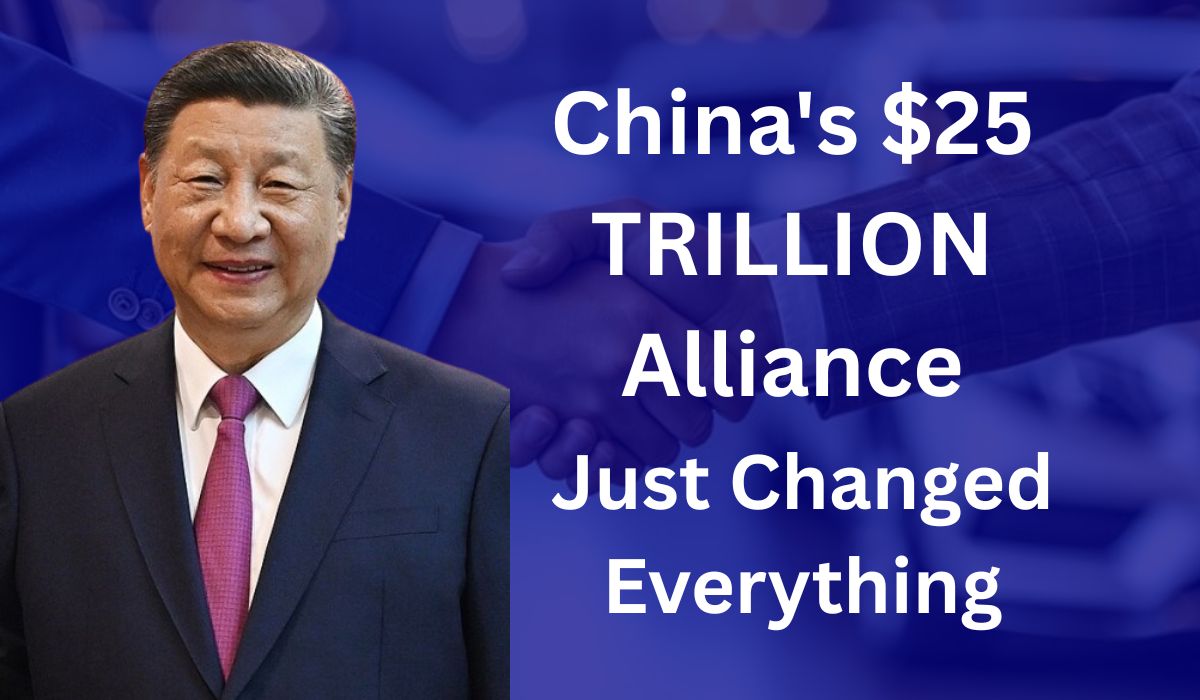The geopolitical landscape shifted significantly in late May when China successfully brought together more than 20 countries in what became a watershed moment for global economic power dynamics. In Kuala Lumpur, the Gulf Cooperation Council (GCC), China and the 10-member Association of Southeast Asian Nations (ASEAN) agreed to “chart a unified and collective path towards a peaceful, prosperous, and just future” during their historic first-ever trilateral summit.
What stands out here is the sheer economic weight behind this alliance. ASEAN, the GCC, and China collectively represent a combined gross domestic product (GDP) of $24.87 trillion with a total population of about 2.15 billion. This represents more than 30% of global GDP and demonstrates China’s strategic ability to build coalitions that rival established Western economic structures.
The Numbers Tell the Strategic Story
Looking at the data reveals why this development matters so much for global markets. Together, these economies control massive trade flows and energy resources that have historically moved through dollar-denominated systems. The timing is particularly significant as it comes amid escalating trade tensions and tariff disputes that have pushed many countries to seek alternatives to US-dominated supply chains.
What’s particularly striking is how this alliance surpasses previous attempts at creating alternative economic blocs. While BRICS has long been viewed as a counterweight to Western influence, this new coalition brings together regions with established trade relationships and complementary economic strengths – Southeast Asian manufacturing capabilities, Gulf energy resources, and Chinese infrastructure financing.
Infrastructure Investments Signal Long-term Commitment
The alliance isn’t just about diplomatic statements – it’s backed by concrete infrastructure investments that are reshaping regional connectivity. China’s Belt and Road Initiative has already established crucial foundations in both regions. In Indonesia, the $7 billion high-speed rail line between Jakarta and Bandung has carried more than 9 million passengers since its launch, demonstrating the tangible benefits these partnerships deliver.
Similarly, the expansion of Malaysia’s Kuantan Port with Chinese investment has doubled its capacity, transforming it into a major hub for iron ore and industrial goods transshipment. These aren’t just infrastructure projects – they’re strategic assets that redirect global supply chains away from traditional Western-controlled routes.
Energy Markets Show Shifting Currency Patterns
The energy sector reveals perhaps the most significant strategic implications. Around 30% of Saudi oil shipments now move in currencies other than the dollar, and this percentage continues growing. When major transactions like the 2023 China-Total Energies liquefied natural gas deal occur in yuan rather than dollars, it signals a fundamental shift in how global energy markets operate.
China’s dominance in renewable energy technology adds another layer of strategic depth. Producing about 80% of global solar panels and leading in wind turbine exports, China positions itself at the center of both traditional and future energy systems. Whether the world runs on oil or renewables, Beijing maintains crucial leverage.
Trade Flows Accelerating Regional Integration
The data shows how rapidly trade patterns are changing. In the first quarter, manufacturing products accounted for 90.1 percent of China’s trade with ASEAN countries, with Chinese exports of flat panel displays, automotive parts, and lithium batteries rising more than 20 percent.
Asian trade with China reached $982 billion in 2024, representing nearly 20% of Asia’s total trade volume. Early 2025 data indicates continued acceleration, particularly in future-focused sectors like digital services, renewable energy, and smart manufacturing.
Gulf States Pivot Creates Strategic Depth
The Gulf Cooperation Council’s participation adds crucial strategic depth to this alliance. Trade between Gulf states and ASEAN reached approximately $130 billion in 2023, with official targets to increase this to $180 billion by 2032. This isn’t just about oil exports – Gulf investors are putting significant capital into artificial intelligence, digital finance, and renewable energy sectors where China and Southeast Asia already lead.
The political dimensions are equally important. The three parties signed a joint statement pledging to cooperate more closely on trade, supply chains, infrastructure and finance, creating institutional frameworks for deeper integration.
US Response and Strategic Implications
What makes this development particularly significant is how it responds to current US trade policies. Recent tariff increases have pushed many countries to accelerate their search for alternative trading partners. Indonesia’s experience illustrates this pattern clearly – after Washington imposed 10% duties on a wide range of goods, Jakarta’s trade surplus collapsed to $160 million by May, the lowest level in five years. Simultaneously, Indonesian imports of equipment and machinery from China and Singapore rose more than 20%.
Vietnam faced similar pressures when steel and aluminum tariffs doubled to 50%, leading to a 27% decline in steel exports to the United States. Rather than accepting reduced trade volumes, these countries strengthened their regional partnerships and deepened ties with China.
Looking Forward: A Parallel Economic System
The critical insight here is that this isn’t just another diplomatic summit or trade agreement. While analysts note this may be “more symbolism than substance” initially, the underlying economic foundations suggest something more transformative is taking shape.
This alliance creates the framework for supply chains, settlement currencies, and infrastructure networks that can function independently of Western-controlled systems. When you combine China’s manufacturing capacity, ASEAN’s production capabilities, and the Gulf’s energy resources with established financial and infrastructure connections, you get the foundation for a parallel economic system.
The question for markets and policymakers isn’t whether this shift will matter – the economic data shows it already does. The real questions are how quickly this parallel system will develop and what percentage of global trade it will capture. For US economic leadership, this represents the most significant structural challenge since the post-World War II international order was established.
As global supply chains continue reorganizing and alternative financial systems gain momentum, investors and businesses worldwide will need to carefully monitor how this new economic alignment affects everything from currency markets to commodity prices to technology standards. The center of global economic gravity is shifting, and the implications will ripple through markets for years to come.
